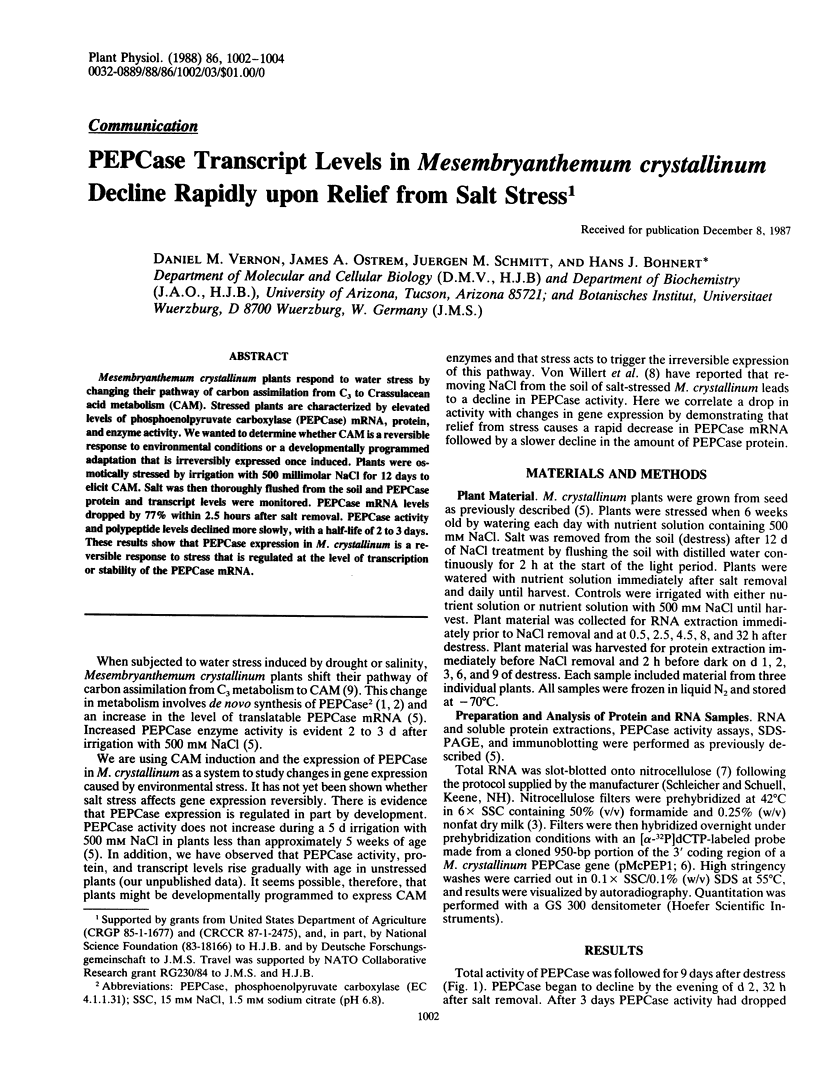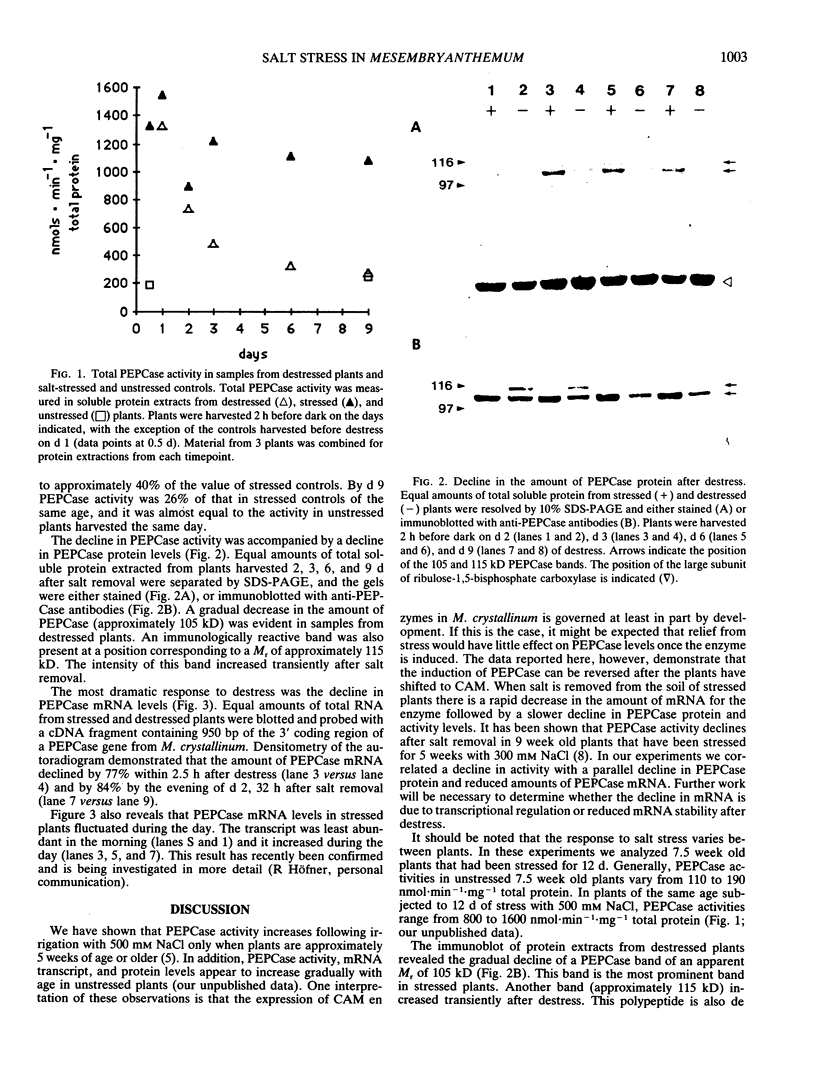Abstract
Mesembryanthemum crystallinum plants respond to water stress by changing their pathway of carbon assimilation from C3 to Crassulacean acid metabolism (CAM). Stressed plants are characterized by elevated levels of phosphoenolpyruvate carboxylase (PEPCase) mRNA, protein, and enzyme activity. We wanted to determine whether CAM is a reversible response to environmental conditions or a developmentally programmed adaptation that is irreversibly expressed once induced. Plants were osmotically stressed by irrigation with 500 millimolar NaCl for 12 days to elicit CAM. Salt was then thoroughly flushed from the soil and PEPCase protein and transcript levels were monitored. PEPCase mRNA levels dropped by 77% within 2.5 hours after salt removal. PEPCase activity and polypeptide levels declined more slowly, with a half-life of 2 to 3 days. These results show that PEPCase expression in M. crystallinum is a reversible response to stress that is regulated at the level of transcription or stability of the PEPCase mRNA.
Full text
PDF


Images in this article
Selected References
These references are in PubMed. This may not be the complete list of references from this article.
- Höfner R., Vazquez-Moreno L., Winter K., Bohnert H. J., Schmitt J. M. Induction of Crassulacean Acid Metabolism in Mesembryanthemum crystallinum by High Salinity: Mass Increase and de Novo Synthesis of PEP-Carboxylase. Plant Physiol. 1987 Apr;83(4):915–919. doi: 10.1104/pp.83.4.915. [DOI] [PMC free article] [PubMed] [Google Scholar]
- Nimmo G. A., Nimmo H. G., Hamilton I. D., Fewson C. A., Wilkins M. B. Purification of the phosphorylated night form and dephosphorylated day form of phosphoenolpyruvate carboxylase from Bryophyllum fedtschenkoi. Biochem J. 1986 Oct 1;239(1):213–220. doi: 10.1042/bj2390213. [DOI] [PMC free article] [PubMed] [Google Scholar]
- Ostrem J. A., Olson S. W., Schmitt J. M., Bohnert H. J. Salt Stress Increases the Level of Translatable mRNA for Phosphoenolpyruvate Carboxylase in Mesembryanthemum crystallinum. Plant Physiol. 1987 Aug;84(4):1270–1275. doi: 10.1104/pp.84.4.1270. [DOI] [PMC free article] [PubMed] [Google Scholar]
- Thomas P. S. Hybridization of denatured RNA transferred or dotted nitrocellulose paper. Methods Enzymol. 1983;100:255–266. doi: 10.1016/0076-6879(83)00060-9. [DOI] [PubMed] [Google Scholar]




